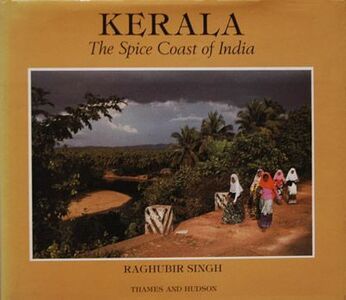I saw Raghubir Singh for the first time when he came to our house to meet my father. He was introduced by Shatul Kaku (R.P.Gupta), as the most promising photographer. Raghubir Singh as I saw him was a man of few words. He sat in one place with his camera hanging from his neck, like a pistol ready for shooting. He took in the environment and the scene of my father’s large library, without a word.
He did not rummage through any of the books. He sucked in the scene like a vacuum cleaner, as RP and my father got into animated discussion. Later as the tea was served he sipped very politely but sat transfixed in his chair for hours. No, he did not take a single shot. My father was also not very inquisitive about him. He left with RP after that..I think to visit Satyajit Ray. I did see Raghubir a couple of time again in my father’s library going through elephant folios of prints of India by Thomas & William Daniell.
Years later ,when I was working in Anandabazar Patrika Group, I was called to the room of our Chief Editor, Mr. Aveek Sarkar. I entered the room to find Raghubir sitting. It reminded me of the man I had met years ago.
Mr. Sarkar told me that Raghubir will be working on a series of photo essays, for SUNDAY magazine, starting with Kerala, and would it be possible to have them sponsored. Thus began my relation with Raghubir Singh. The photo-essays did start off and KERALA was published. It got me near to a man who loved photography more than any thing else in this world.Mr. Sarkar told me that Raghubir will be working on a series of photo essays, for SUNDAY magazine, starting with Kerala, and would it be possible to have them sponsored. Thus began my relation with Raghubir Singh. The photo-essays did start off and KERALA was published. It got me near to a man who loved photography more than any thing else in this world. I learned during my brief encounter that, you do not talk to him. Raghubir chooses to talk to you. He struck conversation rarely. . The one person with whom he reacted closely was RP Gupta. . They spoke endlessly on all kind of topics under the sun. Raghubir took out each of his prized prints and explained how it had come about. I say ‘come about’, as I found that each had a long story, a happening.
To me he was the Daniell of the Twentieth Century. He captured India, in Colour just as the Daniells’ had done in prints years back. From Kashmir to Kerala, Raghubir captured them…… people, their clothes, customs, and habits. ……. to me he is the epitome of the twentieth century photo artist to record Indian in its leap forward to the next century. Raghubir died in New York in 1999 leaving us poorer by thousands of colour images through his lense motley.
According to Raghubir, “The true Indian artist cannot ignore the blessing of colour... Indians know colour through intuition, while the West tries to know it through the mind. Indeed, India is a river of colour. In my home in Jaipur, black was a colour we shunned, in spite of the dinner jackets that the British brought in. We associated it with evil. When the monsoon breaks and the dusty-brown of the desert becomes a wet-brown dappled by lush greens, the lariya colour also leaps to life through clothing, its greens and yellows assuming a consonance with nature. In the summer, pale colours dispel the heat. At death, the monochrome sheen of white is the colour of mourning; but it is also a colour of life - it is the colour that bonds life and death, because unlike black it is receptive to the whole chromatic scale of colour.” That is Raghubir.




